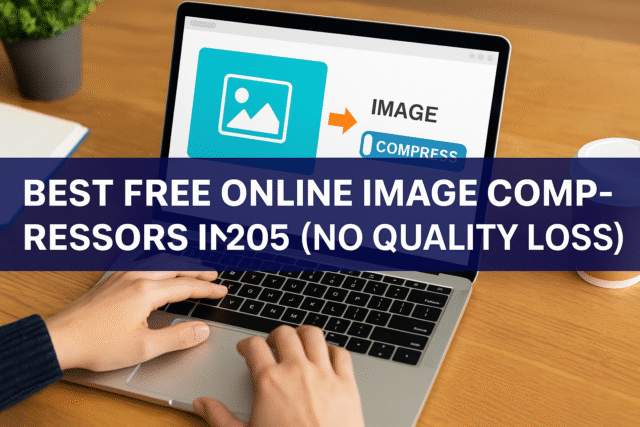Introduction
In 2025, website speed and image quality remain two of the most important factors for online success. Whether you run a blog, manage an e-commerce store, or post on social media, you need images that load fast without sacrificing quality.
That’s where free online image compressors come in. These tools reduce file sizes while keeping your visuals sharp, ensuring a better user experience and higher Google rankings.
In this guide, we’ll review the best free online image compressors in 2025 that deliver lossless or near-lossless compression, all optimized for U.S. users.
Why Image Compression Matters in 2025
Google’s Core Web Vitals emphasize site speed as a ranking factor. Images often make up more than 50% of a page’s weight. Without compression:
- Your site loads slower.
- Bounce rates increase.
- Search rankings drop.
- Mobile users burn through data faster.
Lossless compression ensures file sizes shrink without visible quality loss — ideal for photographers, designers, and business owners who care about image detail.
Top 6 Free Online Image Compressors (2025 Edition)
1. TinyPNG / TinyJPG
- Website: TinyPNG.com
- Pros: Smart lossy compression with minimal quality loss, supports PNG and JPG, drag-and-drop interface.
- Cons: 20 images per batch limit on the free plan.
- Best For: Bloggers, small business owners who need quick results.
2. CompressJPEG / CompressPNG
- Website: CompressJPEG.com
- Pros: No sign-up, instant results, multiple format support.
- Cons: Ads on the free version.
- Best For: Quick one-off compression tasks.
3. ImageOptim (Web Version)
- Website: ImageOptim.com
- Pros: Privacy-focused, strips unnecessary metadata, keeps quality high.
- Cons: Slower than some competitors.
- Best For: Photographers concerned about privacy.
4. ILoveIMG
- Website: ILoveIMG.com
- Pros: Bulk compression, supports multiple formats, includes other editing tools.
- Cons: Requires internet connection.
- Best For: Agencies managing large batches of images.
5. Kraken.io (Free Web Interface)
- Website: Kraken.io
- Pros: Lossless mode, fast processing, keeps EXIF data if needed.
- Cons: Limited features on free plan.
- Best For: E-commerce product image optimization.
6. Squoosh (by Google)
- Website: Squoosh.app
- Pros: Works offline in your browser, real-time compression preview.
- Cons: One image at a time.
- Best For: Developers and designers tweaking compression settings.
How to Choose the Right Image Compressor
When picking the best compressor for your needs, consider:
- File formats supported (JPG, PNG, WebP).
- Batch vs. single compression.
- Privacy policies for sensitive images.
- Speed of compression.
Step-by-Step: Compress Images Without Losing Quality
- Upload your image to the compressor of your choice.
- Select “Lossless” mode if available.
- Download the optimized file.
- Test your website’s speed with Google PageSpeed Insights to see the improvement.
Tips for SEO-Friendly Image Compression
- Use descriptive file names (e.g., best-image-compressor-2025.jpg).
- Add alt text for accessibility and SEO.
- Serve images in next-gen formats like WebP when possible.
- Keep images under 200 KB for faster mobile performance.
Frequently Asked Questions
Q: Will image compression affect my SEO?
A: Yes — in a good way. Faster-loading pages tend to rank higher.
Q: Can I compress images on my phone?
A: Absolutely. Tools like TinyPNG and Squoosh work in mobile browsers.
Q: Is lossless compression always possible?
A: For some images, lossy compression may be necessary to achieve significant file size reductions.
Conclusion
Image compression in 2025 is easier, faster, and more important than ever. Whether you need lossless quality for professional work or just want faster load times for your blog, these free tools will keep your site sharp and speedy.


Leave a Reply